A prolific variety with a telling name - the “Visibly-Invisibly” tomato: setting yield records
The tomato is capable of captivating any gardener, apparently or invisibly by its appearance. This is a low ornamental shrub strewn with bright pink or red fruits. Ripe tomatoes are ideal for both summer salads and winter preparations. This variety is perfect for those who do not want or do not have time to pay much attention to their summer cottage.
The tomato is so easy to care for that even a beginner who prefers easy chores at the dacha to daily battles for the harvest can cope with its agricultural technology.
Characteristics and description of the variety
The creators of the Visibly Invisible tomato set the main goal of obtaining a variety that can be grown in open ground without much effort. Many years of work have been crowned with success - the tomato is not only adapted to open ground, but also shows decent results in greenhouse conditions.
A group of scientists from Siberia worked on the creation of culture. In 2001, the tomato was included in the State Register of Breeding Achievements. The official distributor of seeds is the Siberian Garden company.
Reference! “Siberian Garden” is known for the production of seed material of varieties mainly from the Siberian collection.
Distinctive features
Determinate type, no more than 1 m high, standard. The foliage is dense, the leaves are medium-sized, deep green. The first fruitful branch is laid above the fourth leaf, the second - above the sixth, the subsequent ones through one leaf. There are no more than 4-5 fruitful branches in total.When the last flower cluster is formed, the growth of the main stem stops.
Reference! The standard bush has a thick, stable stem and, due to its lush crown, resembles a miniature tree.
Early ripening variety - 90–100 days pass from the moment of germination to full ripening. Fruiting is extended, vegetables are harvested from early summer to mid-autumn.
Productivity is high, from 1 sq. m, 9–12 kg of fruits are collected, planting no more than three seedlings per 1 sq. m. m.
Disease resistance is good; the crop resists known diseases of the Solanaceae family.
Fruit characteristics
Average weight 100–130 g, traditional, round shape. The color ranges from bright pink to deep red, the taste is sweet with pronounced sourness, which is excellent for pickles and marinades. The strong peel prevents ripe tomatoes from cracking either during the ripening process or in jars. Tomatoes are used to prepare canned juices, adjika, pasta, lecho and sauces. They are also ideal in fresh salads and side dishes.
The size of ripe vegetables allows them to be canned whole; they retain their flavor when pickled.
Thanks to their dense pulp and durable skin, ripe vegetables can withstand long-term storage, maintaining their presentation. They can be transported to any distance without any problems.
The photo shows the Visibly Invisible tomato variety.
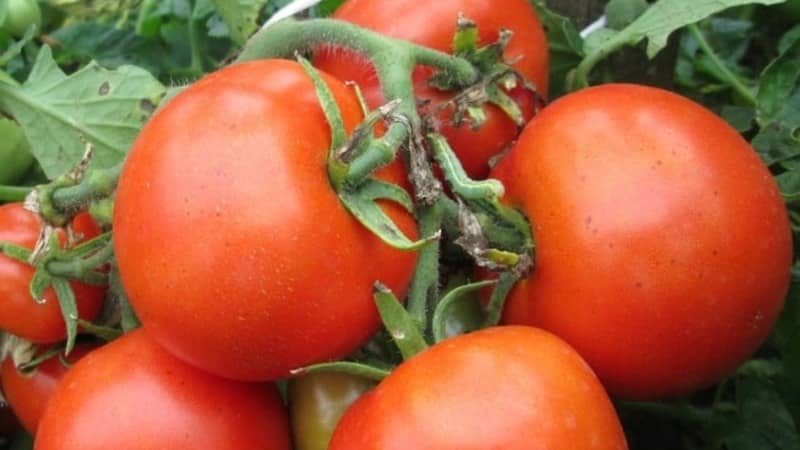
How to grow seedlings
Sowing begins eight weeks before planting seedlings in the ground. The culture does not belong to the hybrid type, which means that the seed material can be collected independently. Seeds of varietal crops retain their parental properties in subsequent generations.
Reference! Seedlings grown from their own seed material have stronger immunity.This is due to the fact that the tomato from which the seeds were collected grew in that region and therefore it is more adapted to that climate.
Seed preparation
Seed preparation is as follows:
- Identification of defective specimens. The seed material is carefully inspected for visible defects.
- Definition of empty seeds. The grains are placed in the saline solution for 10 minutes. Those that float to the surface are disposed of. A saline solution is prepared from 1 teaspoon of salt dissolved in a glass of warm water.
- Disinfection. In solution potassium permanganate pink seeds are placed for 20 minutes. It is prepared from 1 g of manganese dissolved in half a glass of water. After disinfection, the grains are washed and dried.
To increase germination, seed material is soaked in a growth stimulator, for example: “Zircon” or “Epin”. Melt water can also be used for this purpose. Exposure to stimulants - at least 10 hours.
Container and soil
The soil is made from garden soil, peat and river sand in equal quantities. After thoroughly mixing all the components, the resulting mixture is poured with a hot solution of manganese to destroy pathogenic flora. For soil fertility, add a little wood ash.
Containers for sowing are treated with a strong solution of manganese and holes are made at the bottom of each to drain excess moisture. Such holes are necessary, since excess moisture has a detrimental effect on seedlings. Excess moisture promotes root rot and the development of fungal infections.
You can plant in a common wooden box and in separate containers, for example, plastic cups, peat pots, paper honeycombs.
Sowing
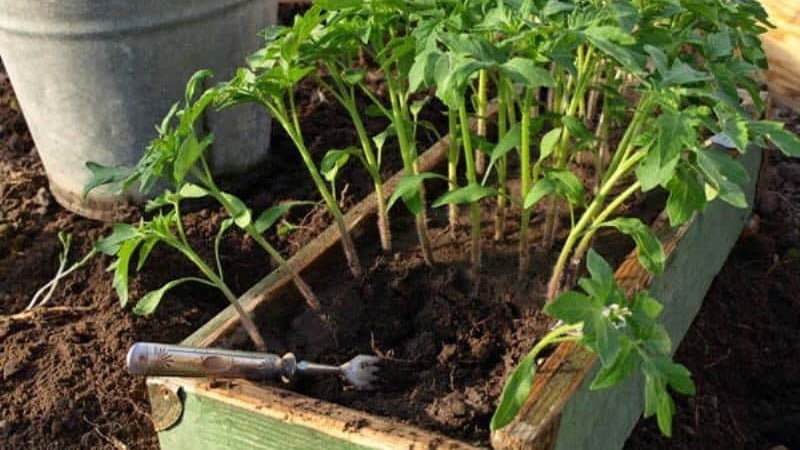
The grains are sown to a depth of 1.5 cm, leaving a distance of at least 2 cm between them.Sprinkle the top with earth and lightly moisten with warm, settled water. The seeded containers are covered with film or glass to simulate greenhouse conditions. Until the first shoots, the containers are left in a bright room with a temperature of 24-26°C.
Seedling care
After the seedlings emerge, the containers are placed in a more illuminated place on the windowsill. Getting the required amount of light is important at the initial stage, otherwise the seedlings will stretch and weaken. Daylight hours are 13 hours. If there is a lack of natural light, artificial lamps are installed.
The seedlings are watered with warm, settled water when the soil begins to dry out. Getting moisture is as necessary as getting light. But you should not flood the sprouts; excess moisture will negatively affect the further development of the seedlings.
After watering, the soil is carefully loosened so as not to disturb the young roots. Loosening promotes better penetration of oxygen into the soil.
As soon as the second true leaf is formed, the seedlings are picked and planted in a separate container. Before picking, the soil is well moistened in order to replant along with a lump of earth. With this method of transplantation, young bushes will take root faster. After picking, an increased growth of lateral roots occurs, due to which the seedlings develop more intensively.
During the seedling period, young bushes are fed twice. The first fertilizing is carried out a week after picking, the second time the seedlings are fertilized before planting in a permanent place. Feed with liquid fertilizer for tomato seedlings. All fertilizing is combined with watering.
Two weeks before planting, seedlings are hardened off in the open air. The seedlings are taken outside in the daytime at a temperature of 16°C. The night temperature in the room is reduced to 12°C.
How to grow tomatoes
The seedlings are transplanted as soon as the soil warms up to 16-17°C. In case of return of frosts, always keep covering material ready.
Landing
The holes are made in advance, no deeper than 15 cm. A little wood water is placed at the bottom of each and filled with warm water.
Replant on a cloudy day or after sunset. The distance between seedlings is 40 cm, between rows - 70 cm. Per 1 sq. m place no more than three plants.
After transplantation, the holes are compacted, watered with warm, settled water and the seedlings are left to get used to the new conditions for a week.
Further care for tomato Visible and invisible
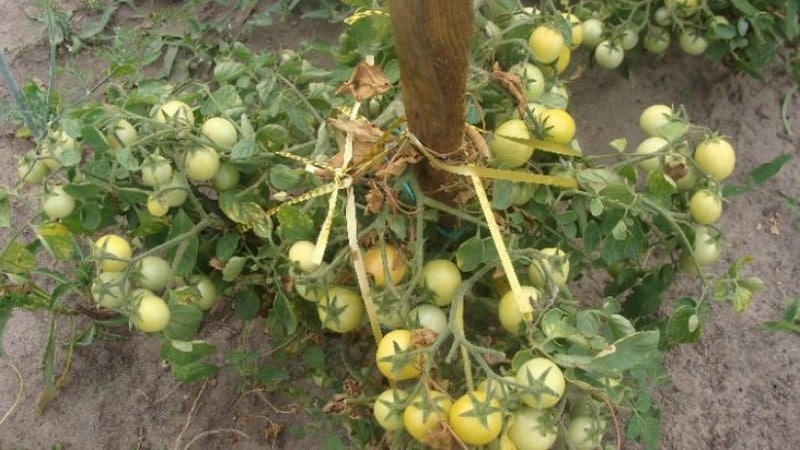
For full growth and development, tomatoes need systematic watering, weeding and lighting. To prevent the bushes from shading each other, they are planted in a checkerboard pattern. With this method of planting, they not only receive a sufficient amount of light, but are also ventilated as needed. Ventilation prevents fungal infections from developing.
Watered moderately, no more than twice a week. To retain moisture in the beds, they are mulched with straw or dry leaves. At mulching Weed grass provides additional nutrition to the roots, since when weeds rot, they release a lot of nutrients.
Loosening the beds improves the breathability of the soil, saturating the root system with oxygen. With constant access of oxygen to the roots, plants develop fully.
From fertilizing use a complex of minerals or organic matter. Fertilize 3-4 times throughout the season. For the first time, nitrogenous fertilizers are applied in open ground two weeks after transplantation. During the formation of ovaries and fruiting, they are fed with phosphorus and potassium.
Organic matter, mullein infusion or bird droppings are also used in a ratio of 1:15. The application of organic matter is alternated with mineral fertilizing.
Reference! All fertilizing is applied immediately after watering.
Features of care and possible difficulties
As a rule, low-growing bushes are not planted, thereby increasing their yield. But judging by the characteristics and reviews, it is possible to increase the output of the Visibly Invisible tomato variety when forming plants. The main growth point is transferred to the most powerful of the lower stepsons; the formation of the bush will depend on this. Usually the plant is grown in two or three stems.
From the photo and description you can see that the branches are literally strewn with ripe vegetables. No matter how powerful the trunk is, it will not support so many fruits. The branches will begin to spread along the ground, and the vegetables will rot upon contact with the ground. Therefore, they are tied to an additional support installed next to each seedling.
Diseases and pests
The crop is immune to the main tomato diseases, but when the plantings are dense, there is a risk of late blight. For preventative purposes, remove all lower leaves up to the first fruiting cluster, as well as all yellowed foliage.
When spraying plants with fungicidal agents, the risk of infections in greenhouses is reduced. Enclosed structures often experience elevated levels of humidity and temperature. To keep these indicators normal, the greenhouse is ventilated daily.
When planting in a greenhouse, the soil must be spilled with a hot solution of potassium permanganate and copper sulfate.. Copper sulfate destroys fungal spores in the soil. The walls of the greenhouse are treated with Bordeaux mixture.
Among the pests, seedlings are attacked by aphids, mole crickets and slugs.A soap solution used to treat plant stems will help against aphids and slugs. It is prepared simply: one piece of laundry soap is dissolved in a bucket of warm water.
The mole cricket moves underground and is difficult to notice. But it is sensitive to odors, so experienced gardeners do not wait for its appearance, but immediately after planting the seedlings, they bury crushed garlic cloves in the beds, which repel the pest from planting.
Interesting! The mole cricket is a distant evolutionary relative of the grasshopper. It reaches a length of up to 5 cm and spends most of its life underground. Its front legs are powerful digging scoops, with which they disrupt the root system and the plants die.
Nuances for open ground and greenhouses
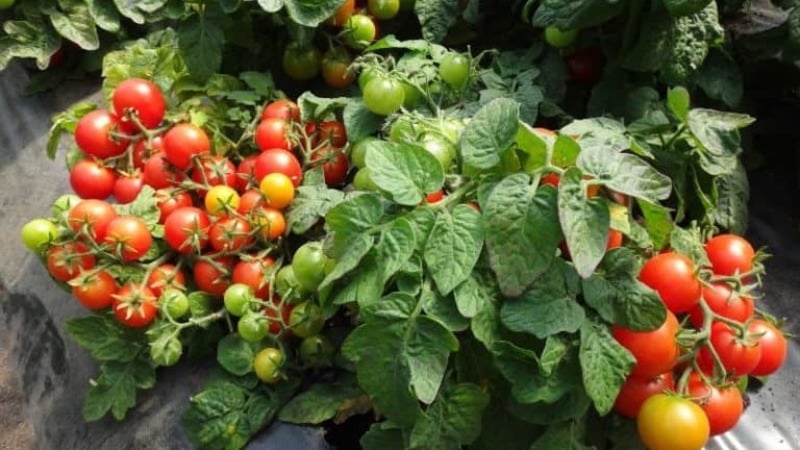
In open ground, seedlings grow no more than 60 cm, while greenhouse plants reach 1 m. When planting in a greenhouse, more distance is left between seedlings. Otherwise, dense plantings will lead to the spread of fungal infections.
According to the rules of crop rotation, tomatoes are not planted in those beds where peppers, eggplants or potatoes previously grew. These crops belong to the same family and suffer from the same diseases. In addition, after them the soil is depleted and will not be able to ensure the full development of tomatoes.
When planting seedlings in open ground, the beds are chosen in a sunny place and without drafts. Drafts can seriously damage the crop (break the stem or individual branches). The plant will not be able to fully receive nutrition and will die.
Harvesting and application
The harvest does not begin until July. Due to long fruiting, ripe vegetables are harvested before the first frost.
The use of tomatoes is universal.Due to their durable skin and small size, they are excellent for full-fledged canning, pickles and marinades. They are also used for processing into tomato products, preparing ketchups, juices, pastes and adjika.
Fresh vegetables are especially good. They complement any dish and retain their flavor properties in freshly squeezed juices.
Advantages and disadvantages
Tomato has many advantages:
- possibility of breeding in all regions;
- unpretentious care;
- compact and decorative bush;
- resistance to diseases;
- high fruiting rate;
- good taste of fruits;
- numerous ovaries;
- extended fruiting;
- versatility in cooking;
- long-term storage;
- transportation over any distance.
The disadvantages of tomatoes include the garter of low-growing plants.
Farmer reviews
Gardeners' opinions about tomatoes are positive, as the result lives up to expectations.
Anna, Nizhny Novgorod: “We have been growing this variety for four years now and have no plans to give it up yet. The name is true - there really are always a lot of tomatoes. Moreover, regardless of the vagaries of the weather, even in a relatively cool summer it did not get sick and produced a decent harvest.”
Victor, Omsk: “I read the reviews and photos and decided to plant Visibly Invisibly tomatoes at my dacha. I liked the compactness of the seedlings and simple agricultural technology. The result is stunning. The vegetables performed well in winter preparations.”
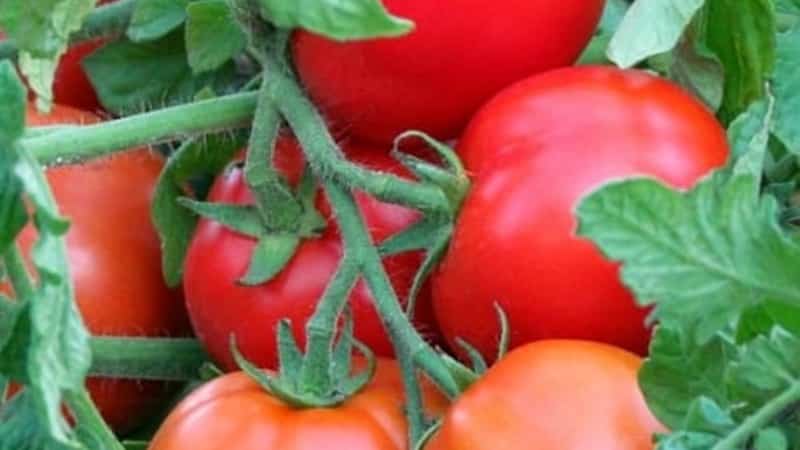
Conclusion
The name of the tomato, which has become its calling card, speaks for itself. Many gardeners have been growing crops for more than one year and have no intention of changing their habits.This is not surprising, because not every tomato can boast such high productivity, disease resistance, good shelf life and ease of care.
The appearance of compact plants, strewn with fruits of varying degrees of ripeness, will decorate any garden plot.